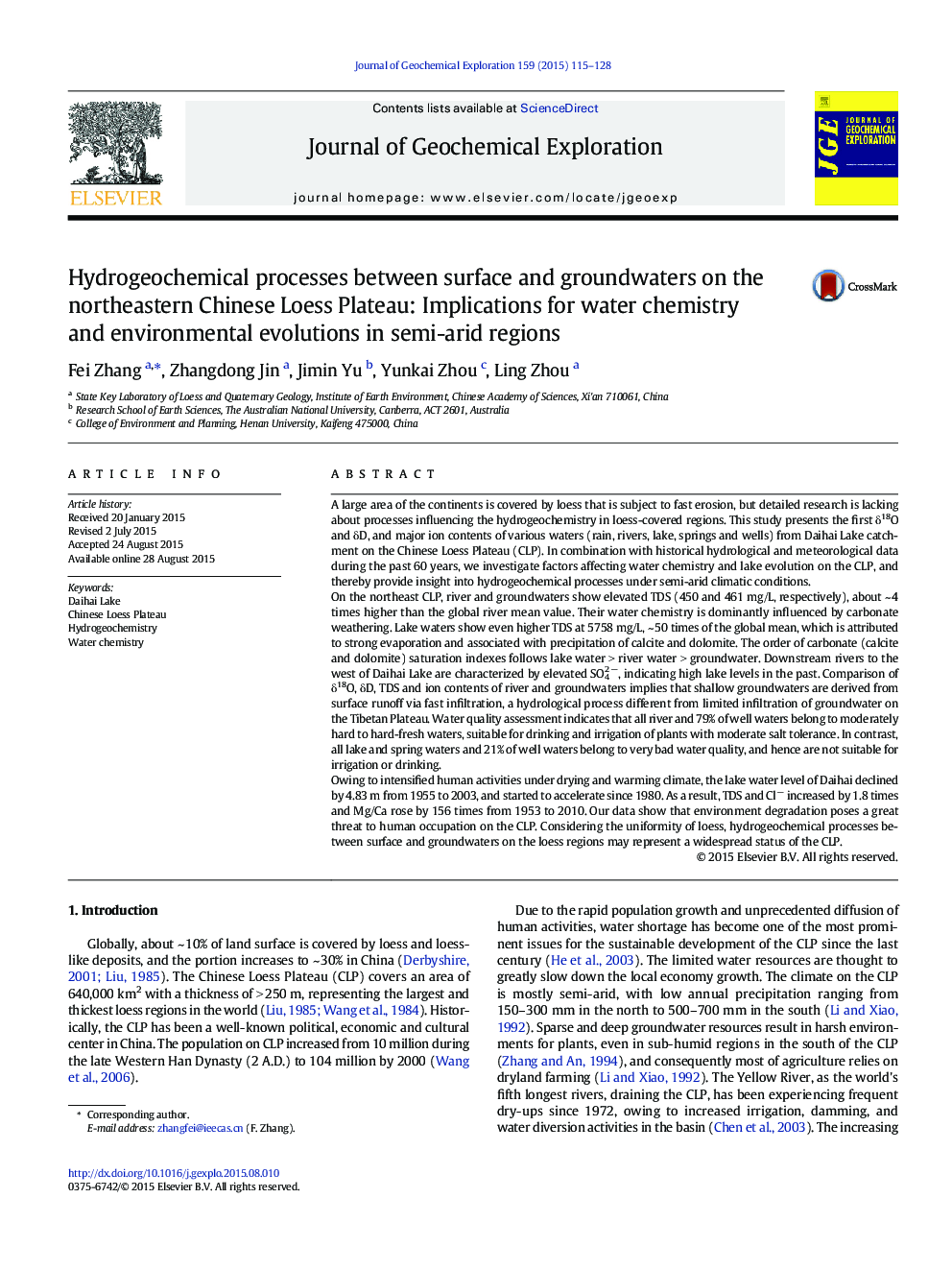| کد مقاله | کد نشریه | سال انتشار | مقاله انگلیسی | نسخه تمام متن |
|---|---|---|---|---|
| 4457053 | 1620900 | 2015 | 14 صفحه PDF | دانلود رایگان |
• Firstly investigated hydrogeochemistry process on the CLP
• Examined major ion chemistry and weathering process and its control mechanism
• Present the first δ2H, δ18O between surface and groundwater on the CLP
• Assessed water quality of surface and groundwater in semi-arid regions
• Evaluated lake evolution and its relationship with climate and human activities
A large area of the continents is covered by loess that is subject to fast erosion, but detailed research is lacking about processes influencing the hydrogeochemistry in loess-covered regions. This study presents the first δ18O and δD, and major ion contents of various waters (rain, rivers, lake, springs and wells) from Daihai Lake catchment on the Chinese Loess Plateau (CLP). In combination with historical hydrological and meteorological data during the past 60 years, we investigate factors affecting water chemistry and lake evolution on the CLP, and thereby provide insight into hydrogeochemical processes under semi-arid climatic conditions.On the northeast CLP, river and groundwaters show elevated TDS (450 and 461 mg/L, respectively), about ~ 4 times higher than the global river mean value. Their water chemistry is dominantly influenced by carbonate weathering. Lake waters show even higher TDS at 5758 mg/L, ~ 50 times of the global mean, which is attributed to strong evaporation and associated with precipitation of calcite and dolomite. The order of carbonate (calcite and dolomite) saturation indexes follows lake water > river water > groundwater. Downstream rivers to the west of Daihai Lake are characterized by elevated SO42 −, indicating high lake levels in the past. Comparison of δ18O, δD, TDS and ion contents of river and groundwaters implies that shallow groundwaters are derived from surface runoff via fast infiltration, a hydrological process different from limited infiltration of groundwater on the Tibetan Plateau. Water quality assessment indicates that all river and 79% of well waters belong to moderately hard to hard-fresh waters, suitable for drinking and irrigation of plants with moderate salt tolerance. In contrast, all lake and spring waters and 21% of well waters belong to very bad water quality, and hence are not suitable for irrigation or drinking.Owing to intensified human activities under drying and warming climate, the lake water level of Daihai declined by 4.83 m from 1955 to 2003, and started to accelerate since 1980. As a result, TDS and Cl− increased by 1.8 times and Mg/Ca rose by 156 times from 1953 to 2010. Our data show that environment degradation poses a great threat to human occupation on the CLP. Considering the uniformity of loess, hydrogeochemical processes between surface and groundwaters on the loess regions may represent a widespread status of the CLP.
Journal: Journal of Geochemical Exploration - Volume 159, December 2015, Pages 115–128
